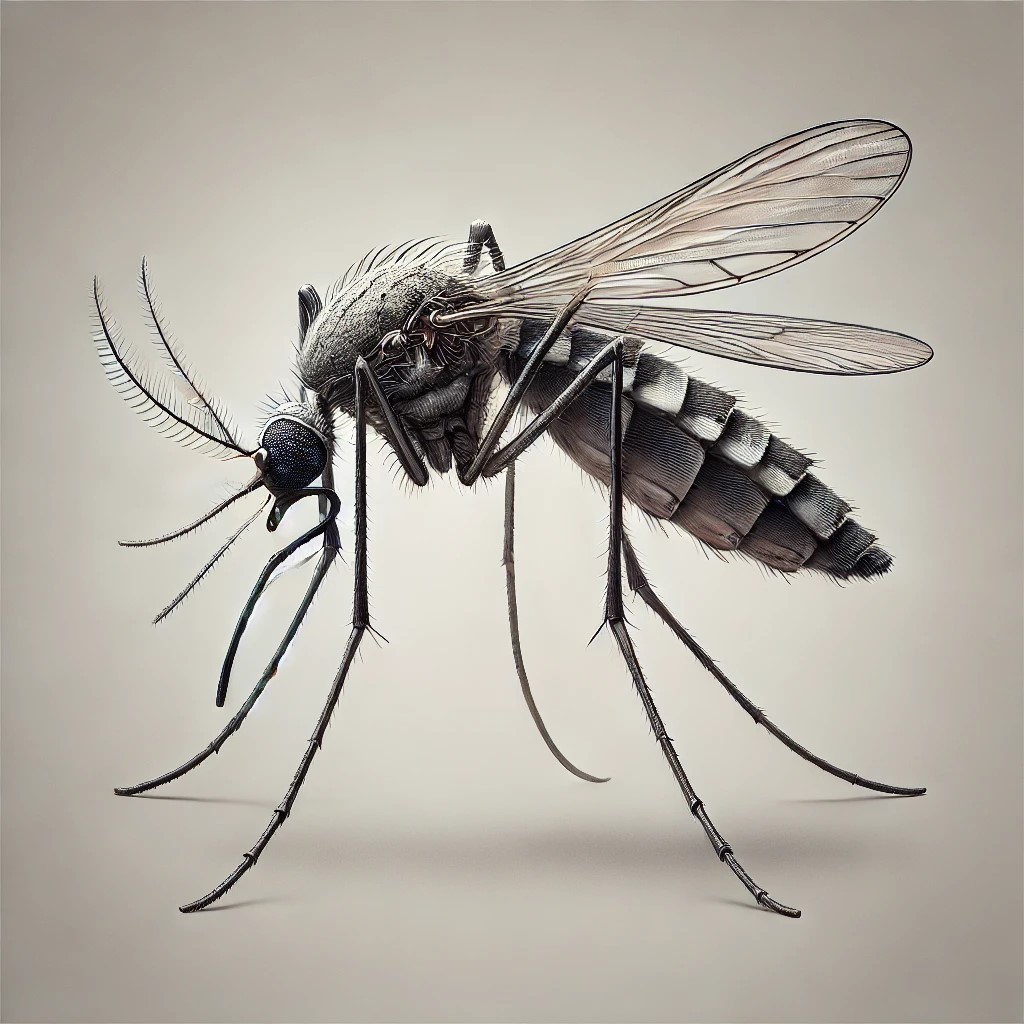
Mosquitoes are small insects that, despite their size, have an enormous impact on public health and human well-being due to their ability to transmit diseases. Understanding their anatomy and physiology is essential not only to grasp how these insects function but also to design effective control strategies that interrupt their life cycle and mitigate their impact.
The Complexity of the Mosquito’s Body
The mosquito’s body, though small, is astonishingly efficient. It is divided into three main segments: head, thorax, and abdomen, each adapted for specific functions.
1. Head
- Compound Eyes: Provide a wide field of vision and sensitivity to movement, essential for identifying hosts and detecting threats.
- Antennae: Equipped with specialized receptors to detect odors that guide them to food sources or breeding sites.
- Proboscis: An elongated structure used by females to pierce the skin and suck blood, while males use it to feed on nectar.
2. Thorax
- Wings: A pair of membranous wings that allow them to fly up to 12 kilometers in a single night.
- Legs: Three pairs of long and slender legs, providing stability when landing on surfaces.
- Respiratory Muscles: Contain a system of air sacs and tracheae that distribute oxygen throughout the body.
3. Abdomen
- Digestion and Reproduction: In females, the abdomen expands significantly to store blood, essential for egg development.
- Sensory Organs: The cercus and siphon at the abdomen’s tip detect chemical stimuli and vibrations, guiding mosquitoes toward sustenance.
Physiology Adapted for Survival
1. Digestive System
The digestive system is designed for a liquid diet.
- Females: Hematophagous, consuming blood to develop eggs.
- Males: Exclusively feed on nectar and plant sap.
2. Circulatory System
Mosquitoes have an open circulatory system that uses hemolymph to transport nutrients and regulate temperature.
3. Nervous and Sensory Systems
Equipped with olfactory and thermal receptors in their antennae and proboscis, mosquitoes detect odors and heat to locate their hosts. This system allows them to find food even in adverse conditions.
4. Respiratory System
Mosquitoes breathe through tracheae and spiracles, which distribute oxygen to all body cells. This system is adapted for both flight and aquatic environments during their larval stage.
Gonotrophic Cycle: From Feeding to Reproduction
The gonotrophic cycle consists of three phases:
- Blood Meal: The female obtains proteins for egg production.
- Oocyte Development: The eggs grow and are coated with a protective chorion.
- Oviposition: Eggs are laid on moist surfaces or stagnant water, restarting the life cycle.
Implications for Mosquito Control
Understanding the mosquito’s anatomy and physiology allows us to target vulnerable points in their life cycle. Some strategies include:
- Eliminating Breeding Sites: Reducing sources of stagnant water.
- Using Selective Insecticides: Targeting the mosquito’s nervous or respiratory systems.
- Biological Control: Introducing natural predators like larvivorous fish.
The mosquito, though small, is a complex organism perfectly adapted to its environment. However, with the right knowledge, it is possible to develop effective strategies to control their populations and minimize their impact on human health.
Are mosquitoes a problem for you?
Contact us at Eco Fauna Control, we have the tools and expertise to protect your home or your business
